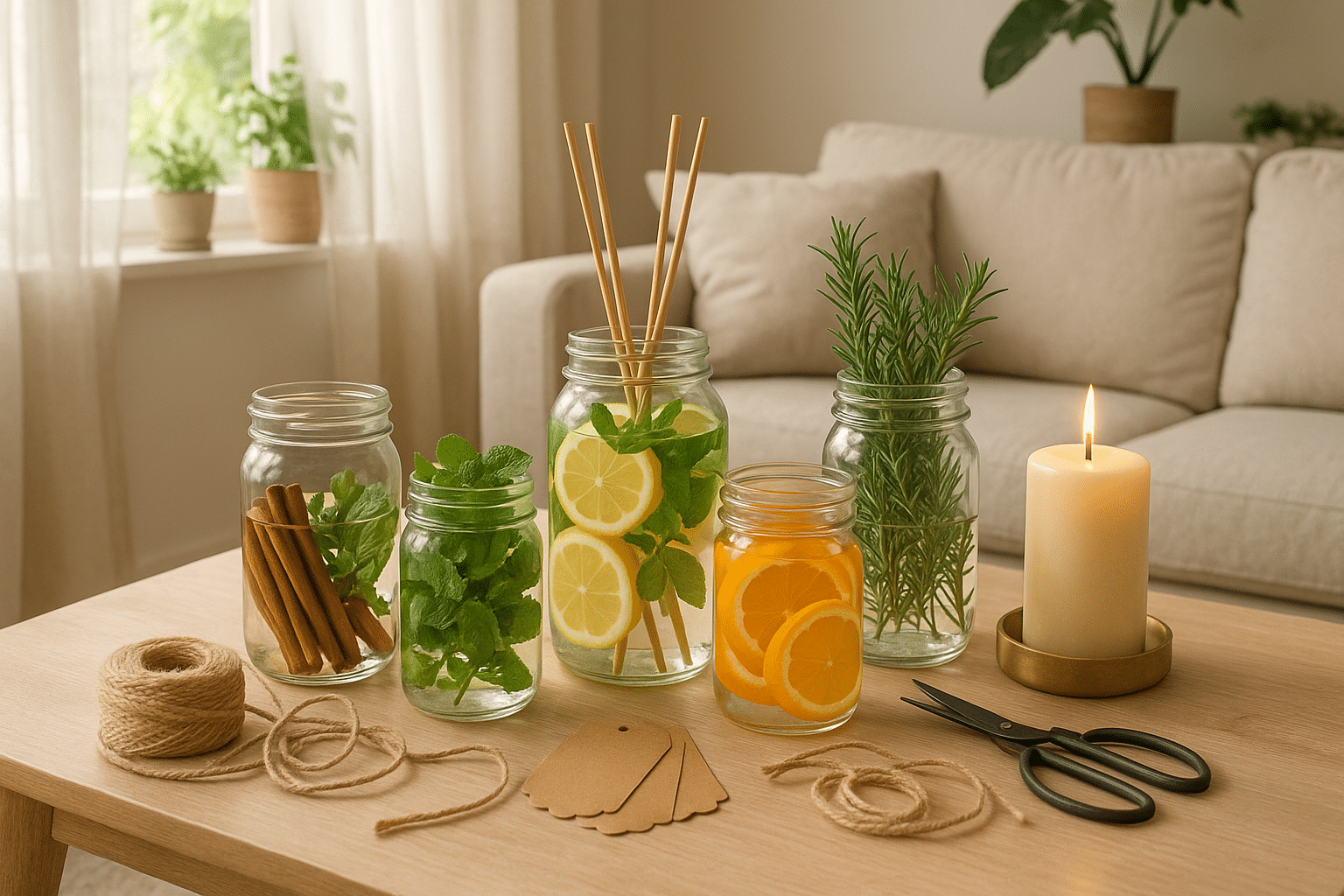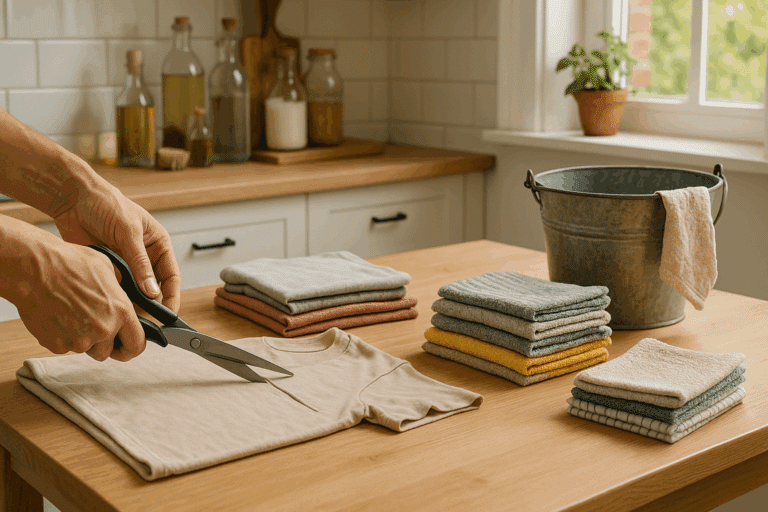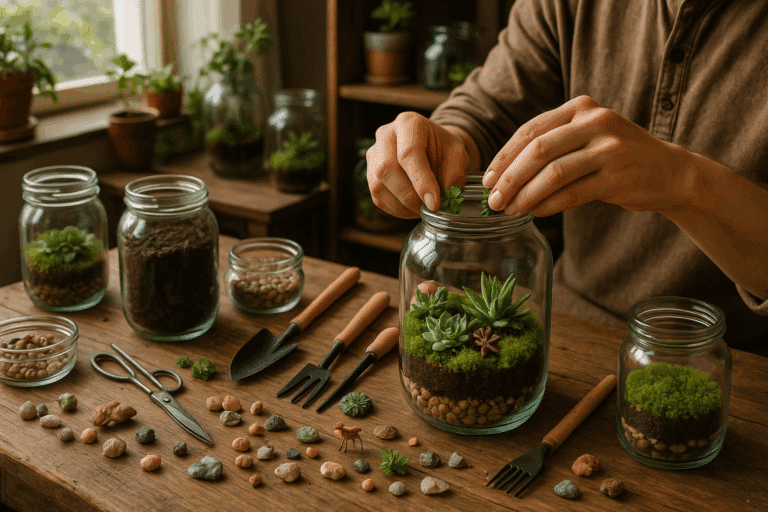Many individuals spend a significant amount of time indoors, whether at home or work, without realizing the impact of air quality on health and well-being. Bad smells, toxins, and allergens can easily build up in confined spaces, leading to a range of problems like allergies, respiratory issues, and even low mood or poor concentration. But, here’s the good news: you don’t have to rely on store-bought air fresheners packed with chemicals. Instead, you can freshen up your space naturally with DIY air fresheners using simple ingredients. And yes, it’s going to be a delightful experience – both making them and basking in their lovely scent! 🌱
So, why should you care about making your own air fresheners? Well, many of us are increasingly conscious of what we consume – be it food, media, or the products we use in our homes. This consciousness extends to air fresheners, which often contain harmful substances that can cause health issues over time. By creating your own natural air fresheners, you’re not only doing your health a favor but also your environment and, not to mention, your pocket! 🍃💰
Understanding the Basics of DIY Air Fresheners
Before we delve into the heart of the matter – creating your own natural air fresheners – it’s important to understand the basics. The principle behind air fresheners is pretty straightforward: they work by releasing fragrance compounds into the air which mask unpleasant odors. However, it’s the source of these compounds that makes a huge difference. Synthetic fragrances, often found in commercial air fresheners, can be harmful when inhaled, while natural sources, like essential oils, are much safer and can even have therapeutic benefits.
DIY air fresheners, on the other hand, employ simple, everyday ingredients that are safe, cost-effective, and, more importantly, naturally fragrant. Essential oils, herbs, spices, and even fruits can be used as part of your DIY air freshener arsenal. 🍊🌿 And here’s an exciting part: creating your own air freshener allows you to customize the scent according to your preference or mood!
What to Expect from this Article?
In this comprehensive guide, we will cover everything you need to know to start creating your own delightful DIY air fresheners. We’ll kick things off by exploring the various types of DIY air fresheners you can make – from simmering potpourris and refreshing room sprays to scent-filled sachets and aromatic diffusers. We will also dive deep into the world of natural ingredients, understanding their unique fragrance profiles and benefits. 🌸
We’ll provide step-by-step instructions for creating each type of air freshener, with plenty of tips and tricks to ensure success. And for those who love to experiment, we’ll offer suggestions for scent combinations that you can try. We will also touch upon the practical aspects, including how to use and maintain these DIY creations effectively for long-lasting freshness.
So, are you ready to embark on this fragrant journey and transform your space with the delightful scents of nature? Then, let’s get started. And remember, the process of creating these DIY air fresheners is meant to be fun, therapeutic, and definitely satisfying – so take your time and enjoy the experience! 🌺
🍃Embrace the Natural Fragrance: Unpacking DIY Air Fresheners
Why settle for synthetic scents when you can freshen up your space naturally and healthily? Instead of purchasing store-bought air fresheners laden with artificial fragrances and chemicals, you can create your own using simple ingredients. This do-it-yourself (DIY) approach not only provides a delightful scent but also adds a personal touch to your living space. Let’s delve into the fascinating world of DIY air fresheners.
Creating your own air freshener is a simple and rewarding process. All it requires are a few ingredients, a bit of time, and a dash of creativity. By choosing natural components, such as essential oils, you have full control over what you and your family are breathing in. Plus, you can customize the fragrance to your liking, creating a truly unique scent for your home.
Ready to get started on your DIY air freshener journey? Before we dive into the recipes, it’s important to understand the key ingredients involved. This knowledge will help you create air fresheners that not only smell good but are also effective and safe for use around the home.
Key Ingredients for DIY Air Fresheners
The primary ingredients in DIY air fresheners are essential oils, distilled water, and a carrier substance like baking soda or witch hazel. Essential oils are the heart of any DIY air freshener. They are highly concentrated plant extracts that carry the scent of the plant. There are numerous types of essential oils available, each with its unique scent and properties. Some popular options include lavender, peppermint, eucalyptus, and lemon.
The distilled water and carrier substance help dilute the essential oils, making them safe for inhalation and helping to diffuse the scent throughout the room. Baking soda is particularly effective at eliminating odors, while witch hazel helps the water and oil mix more effectively.
For a comprehensive understanding of these ingredients and their uses, check out the table below:
| Ingredient | Properties | Usage in Air Fresheners |
| Essential Oils | Highly concentrated, plant-derived, aromatic. | Provides the main scent and aroma-therapeutic benefits. |
| Distilled Water | Pure, clean, and free from impurities. | Used as a diluting agent for essential oils. |
| Baking Soda | Odor neutralizing, natural, safe. | Eliminates odors and helps to diffuse essential oils. |
| Witch Hazel | Natural astringent, helps oils and water mix. | Improves the mix of water and oils for a longer-lasting scent. |
For a visual guide to these ingredients and their combination, you might want to watch the video “DIY Natural Room Scents” by Clean My Space on YouTube.
👩🔬Crafting Your Own Natural Air Freshener: Step-by-Step Guide
Now that we’ve covered the basics, let’s move onto the exciting part – creating your own DIY air freshener. This process can be as simple or complex as you want it to be, depending on the ingredients and methods you choose. For beginners, here’s a simple recipe to start with:
Basic DIY Air Freshener Recipe
Materials: 1 cup distilled water, 2 tablespoons witch hazel, 20-30 drops of your favorite essential oils, a spray bottle.
- Combine the distilled water and witch hazel in the spray bottle.
- Add your chosen essential oils.
- Shake well to mix.
- Spray around your space to freshen the air. Remember to shake before each use.
Once you’re comfortable with the basics, you can start experimenting with different essential oil combinations, adding fresh herbs or citrus peels, or even making gel or wax-based air fresheners. The possibilities are endless.
Advanced DIY Air Freshener Recipes
For those ready to take their DIY air freshener game to the next level, here are a few more advanced recipes to try. From gel fresheners to simmer pots, these options allow for more creativity and variety in scents and presentation.
Before diving in, don’t forget to watch “5 Simmer Pot Recipes To Make Your Home Smell Amazing” by The Design Sessions on YouTube for more inspiration and guidance.
💡Top Tips for Effective and Safe DIY Air Fresheners
Creating your own air fresheners can be an enjoyable and rewarding experience, but it’s important to do it right. Here are a few tips to ensure that your DIY air fresheners are effective, safe, and wonderfully fragrant:
- Always dilute essential oils: Essential oils are highly concentrated and can cause irritation or adverse reactions if used undiluted. Always mix them with a carrier substance or distilled water.
- Experiment with different scents: The beauty of DIY is that you can customize to your heart’s content. Don’t be afraid to experiment with different essential oil combinations to find your perfect scent.
- Less is more: When it comes to essential oils, a little goes a long way. Start with fewer drops and add more if needed.
- Store properly: Store your DIY air fresheners in a cool, dark place to preserve the potency of the essential oils.
Remember, the goal is to create a healthy, natural fragrance that enhances your living space. So have fun with it, and enjoy the process of crafting your own unique scents!

Conclusion
In conclusion, the dynamic world of software engineering and Information Technology (IT) is one where every detail matters. As we have explored throughout this comprehensive article, understanding the complex concepts in these fields is crucial for all professionals involved.
We kicked off our discussion by diving into the fundamentals of software engineering, providing a solid foundation for those unfamiliar with the topic. We then proceeded to delve into the significance of software engineering in today’s digital landscape. Given the fact that virtually all businesses, institutions, and even individuals depend on software applications for a myriad of functions, it’s safe to say that the importance of software engineering cannot be overemphasized.
Next, we navigated the intricate world of IT, focusing on the role of IT in our increasingly connected world. As we pointed out, IT is not just about fixing computers or designing websites; it’s about creating solutions that make life easier, businesses more efficient, and the world a smaller place.
It was also insightful to reflect on the interplay between software engineering and IT, drawing on their distinct yet interconnected roles in driving technological innovation. More importantly, we highlighted the need for professionals in these fields to remain abreast of emerging trends, constantly update their knowledge, and hone their skills.
Lastly, we explored some of the challenges faced by software engineers and IT professionals. It was revealing to examine these challenges in the context of the ever-changing technological landscape, as well as the opportunities they present for growth and innovation.
As we wrap up, I invite you to reflect on the insights shared in this article. Whether you’re a seasoned professional in these fields, a beginner, or simply curious about software engineering and IT, I believe you’ll find the information invaluable. Feel free to leave your thoughts in the comments section, and share the article with colleagues and friends who might find it useful.😊
Should you desire to delve deeper into the topics discussed, you can explore the following resources:
1. Britannica’s comprehensive article on software engineering
2. Techopedia’s detailed definition of IT
Always remember, in the realm of software engineering and IT, continuous learning is key. Never stop exploring, innovating, and pushing the boundaries of what’s possible. As Albert Einstein once said, “The important thing is not to stop questioning. Curiosity has its own reason for existing.”
Reference:
1. Britannica. (n.d.). Software Engineering. https://www.britannica.com/technology/software-engineering.
2. Techopedia. (n.d.). Information Technology (IT). https://www.techopedia.com/definition/24417/information-technology-it.
Leave a comment



